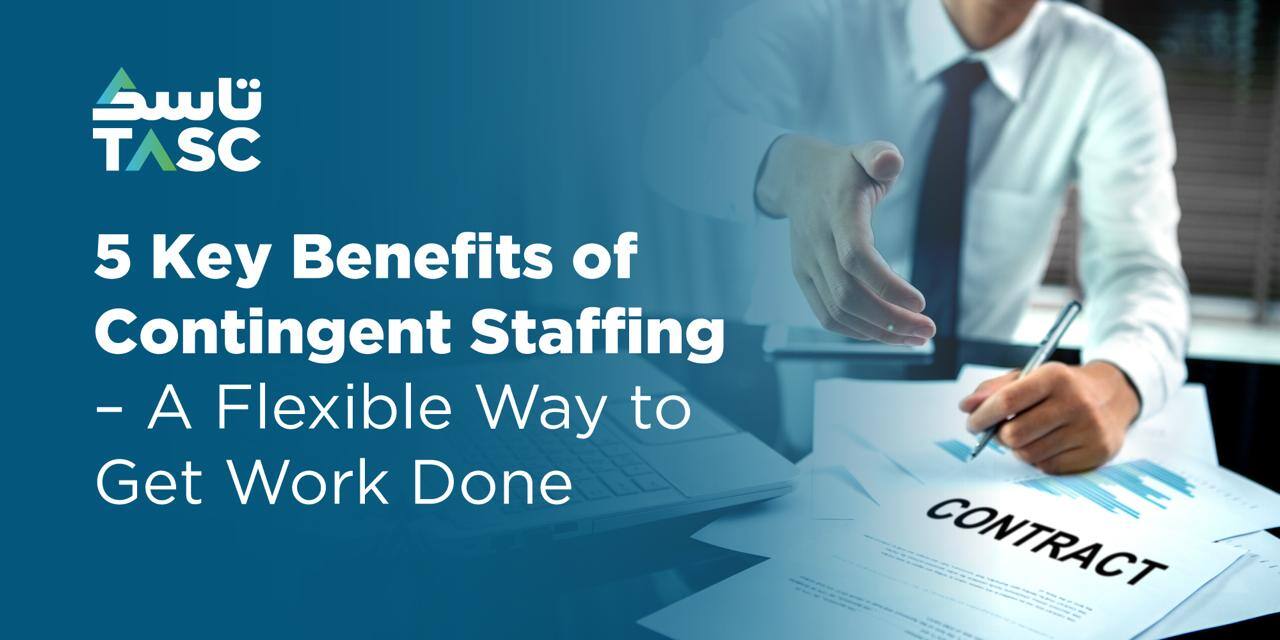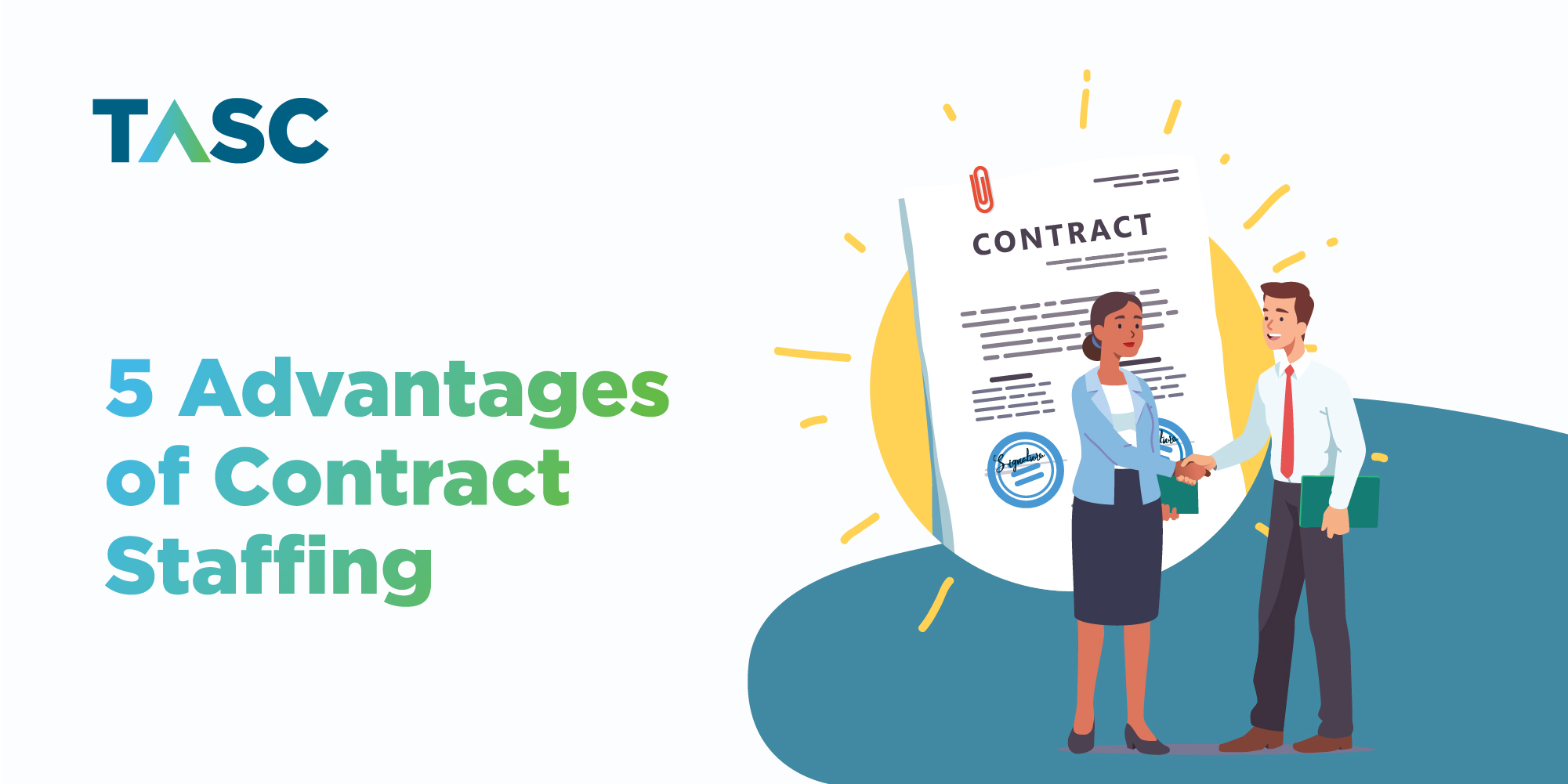5 Key Benefits of Contingent Staffing – A Flexible Way to Get Work Done
There are times when you may need extra help with a project, but you're not so sure if you'll need that help forever. That's exactly where contingent staffing can help.
You get to hire someone temporarily for a specific job instead of giving them a permanent position, and many organizations are doing it.
Why?
Well, sometimes they need certain skills for a short time, and they don't want to commit to hiring someone full-time. So, they bring in temporary workers to fill those skill gaps.
In recent years, more and more companies have been doing this because it helps them save money and find the right people for the job quickly. In fact, a study found that half of all companies are using more temporary workers these days.
This trend is likely to keep growing because both companies and workers are finding it beneficial. Companies get the help they need without long-term commitments, and workers get flexibility and a chance to earn extra money.
What is Contingent Staffing?
As mentioned earlier, instead of offering permanent positions, they partner with agencies or platforms specializing in contingent staffing to find suitable candidates quickly instead of offering permanent positions.
This approach is gaining popularity as companies aim to enhance efficiency and reduce costs by combining in-house employees with temporary staff. It also allows them to tap into a diverse pool of specialized talent as and when needed.
Industries like retail and hospitality are increasingly turning to contingent workforce staffing solutions to meet their staffing needs effectively.
Contingent workers come in various forms, such as
- Consultants,
- Temporary staff,
- Independent contractors, and
- Freelancers.
Unlike permanent employees, they are brought in for a particular project or period, offering businesses greater flexibility and scalability.
When Can You Use Contingent Staffing?
Contingent staffing is a flexible solution for businesses, but knowing when to deploy it can make all the difference.
Let's explore situations where contingent staffing can strategically benefit your operations –
Project-Based Initiatives:
If your company frequently takes on short-term projects that require specific skills or expertise, contingent staffing is the way to go. Whether it's IT development, marketing campaigns, or regulatory compliance projects, temporary workers can provide the specialized knowledge you need.
By partnering with a firm that provides contingent staffing services, you gain access to a diverse talent pool without committing to long-term contracts. It will help you to complete projects faster and achieve better results.
Seasonal Demand Variations:
For businesses experiencing seasonal fluctuations in demand, contingent staffing offers a scalable solution. Whether you're dealing with increased customer traffic during peak seasons or sudden inventory surges, temporary workers can help you adjust your workforce accordingly. Such flexibility allows you to meet demand without overburdening your core team during busy periods.
Short-Term Talent Gaps:
When faced with temporary skill gaps due to employee absences like maternity leave or extended illness, contingent staffing provides an easy fix. By hiring temporary staff, you can fill these gaps quickly and efficiently, ensuring that your operations continue to run smoothly without disruptions.
It’s important to remember that contingent staffing is not just a one-size-fits-all solution. Rather, it's a strategic tool that businesses can leverage to optimize their operational efficiency in various scenarios. By understanding when to deploy contingent workers, you will be able to stay agile, adapt to changing demands, and maintain productivity levels effectively.
Effective Strategies for Managing a Contingent Workforce
Managing a contingent workforce requires a thoughtful approach to ensure productivity, compliance, and seamless integration.
Here are five practical tips to optimize the performance of contingent workers –
- Foster Team Integration – Encourage collaboration and communication between full-time employees and contingent workers by breaking down silos. Clearly define roles and responsibilities for everyone involved and establish dedicated channels for communication. You must appoint a team lead or project manager to coordinate tasks, organize knowledge-sharing sessions, and utilize collaboration tools like Slack or Trello for effective communication.
- Monitor Performance – Keep track of the progress and accomplishments of contingent workers by setting clear performance expectations. Offer regular feedback and recognition to maintain motivation and accountability. Use tools and platforms that can help track goals and metrics and facilitate virtual meetings for performance reviews.
- Ensure Compliance – Avoid legal risks by correctly classifying contingent workers and adhering to labour and tax regulations. Make time to understand the laws related to contingent workers and work with a contingent staffing agency to ensure compliance while sourcing suitable candidates.
- Provide Training and Development – Offer access to relevant resources and training programs to help contingent workers understand company culture, procedures, and guidelines. This ensures they can integrate seamlessly into your team and contribute effectively.
- Utilize Performance Metrics – You must define key performance indicators (KPIs) to measure the impact of contingent workers. Also track metrics such as productivity, work quality, and project outcomes to evaluate performance accurately during reviews.
Final Thoughts
Contingent staffing can provide a valuable and cost-effective solution when your company has temporary needs for specialized skills or project-based support.
If you're considering implementing this flexible staffing model, it's important that you maintain clear communication to foster teamwork within the workforce.
By maintaining an open-door policy and facilitating a smooth transition for your contingent workforce, you can align everyone with your company's goals and objectives.
You also have to prioritize training and development to empower your temporary workers and facilitate their integration into your organization.
When you provide the necessary tools, procedures, guidelines, and leadership support, it enables your contingent workers to quickly find their place within your company and begin making meaningful contributions.
You also should keep up with the market trends, so take time out to learn more about the process. By staying informed and proactive, you can make informed decisions and maximize the value of contingent staffing for your company's success.





